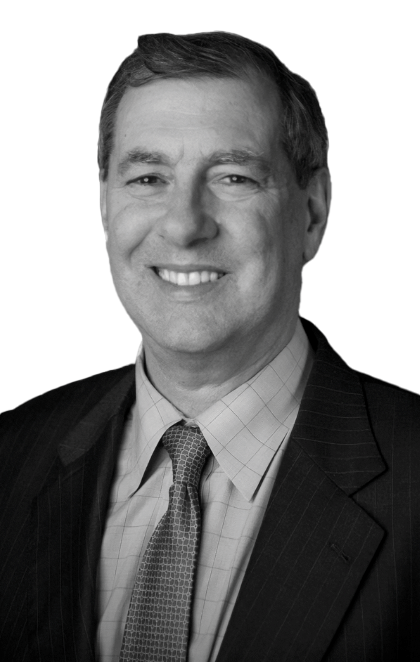News
Article
Digital Edition
Dry eye paradise: FDA green-lights Miebo as first and only eye drop approved for the condition
Author(s):
Experts in the field weigh in on the perfluorohexyloctane ophthalmic solution, the first and only FDA-approved treatment for DED that directly targets tear evaporation instead of tear formation.
(Image Credit: Elena Schweitzer, Krafla, hiro.y/Adobe Stock)

In a move that may shift the dry eye treatment paradigm, the FDA recently approved perfluorohexyloctane ophthalmic solution (Miebo; Bausch + Lomb, Novaliq) for the treatment of the signs and symptoms of dry eye disease (DED).
According to the companies, perfluorohexyloctane ophthalmic solution is the first and only FDA-approved treatment for DED that directly targets tear evaporation instead of tear formation. Formerly known as NOV03, the drug was developed by Novaliq, and Bausch + Lomb attained exclusive licensing in the United States and Canada in 2019.12
The companies noted that the FDA approval was backed up by positive data from the GOBI (NCT04139798) and MOJAVE (NCT04567329) phase 3 pivotal clinical trials, which included 1217 patients who were diagnosed with DED as well as clinical signs of meibomian gland dysfunction (MGD), consistently meeting primary clinical sign and patient-reported symptom end points in the trials.
It is estimated that the DED market in the United States consists of approximately 38 million people, of whom approximately 16 million receive a diagnosis of DED and about 1.2 million receive a DED-specific pharmaceutical product. DED is one of the most common ocular surface disorders.
Andrew Stewart, president, ophthalmic pharmaceuticals, at Bausch + Lomb, said there has been an increase in the overall prevalence of DED, including an increase in younger adult patients (aged 18 to 34 years) over the past decade.1 Of those with DED, it is estimated that approximately 86% have excessive tear evaporation associated with MGD.
Andrew Stewart

Stewart noted that excessive tear evaporation is a leading driver of DED and triggers a chronic cycle of inflammation and friction, damaging the ocular surface. The continuation of this cycle can contribute to the loss of ocular surface homeostasis.2,3
Treating evaporation as the underlying source of DED signs and symptoms could help break the cycle of chronic disease and help restore ocular surface homeostasis.
Perfluorohexyloctane ophthalmic solution is designed to mimic a key function of natural meibum by reducing tear evaporation. Meibomian glands produce meibum, a lipid-rich secretion that forms the tear film lipid layer and helps to maintain a healthy ocular surface.4
“Today, anti-inflammatories, immunomodulators, and tear stimulators are the current standard of prescription care for DED,” Stewart said. “They target only 2 of the 3 key contributors of DED, aqueous deficiency and inflammation, leaving excessive evaporation unaddressed.”
Miebo's packaging presentation. (Image courtesy of Bausch + Lomb)

Stewart also noted that if tear evaporation is not directly addressed, the cycle of symptoms may persist.
“Miebo is a promising new treatment optionthat directly targets tear evaporationthat eye care professionals can add to their armamentarium for their patients with dry eye disease,” he said.
According to Stewart, Bausch + Lomb plans to make perfluorohexyloctane ophthalmic solution commercially available as a new treatment option for patients in the second half of 2023.
“The price of Miebo will be provided at the time of commercial availability,” he said. “Our goal is to make Miebo affordable and accessible to patients who may benefit from this new treatment option as quickly as possible.”
Brent Saunders, chairman and CEO of Bausch + Lomb, noted that the approval of perfluorohexyloctane ophthalmic solution advances DED treatment by addressing a significant unmet need for millions of people who have the disease.
“We are proud to bring to market the first and only prescription eye drop approved in the United States for the treatment of DED that directly targets evaporation,” Saunders said.
Affecting millions of Americans and one of the most common disorders of the ocular surface,5 a leading cause of DED is excessive tear evaporation caused by an altered tear lipid layer. This excessive evaporation is often associated with the clinical signs of meibomian gland dysfunction6,7 and can trigger increased ocular surface desiccation, inflammation, and damage to the ocular surface.8-11
Peter J. McDonnell, MD

Ophthalmology Times reached out to members of its editorial advisory board along with ophthalmologists who specialize in dry eye for their comments on what this approval would mean for their patients with dry eye.
Peter J. McDonnell, MD, director of the Wilmer Eye Institute and co-chief medical editor of Ophthalmology Times, noted that DED is a “special” condition because it is not a single disease but rather an assortment of pathophysiologies that result in a constellation of symptoms (burning, stinging, foreign body sensation, ocular surface staining, tear film instability, etc) that we have come to categorize as “dry eye.”
“For some patients, inflammation is the key factor, and CsA and corticosteroids have been approved for that subset,” McDonnell noted. “For others, meibomian gland dysfunction is central, and therapeutic interventions target those glands, while other patients have a deficiency of goblet cells and the mucin they generate.”
McDonnell noted that other patients with the disease have tear hyposecretion, and there is an FDA-approved drug for stimulating aqueous tear secretion. He noted that “personalized medicine has arrived in the management of dry eye.”
“This latest approval focuses on individuals with excessive tear film evaporation,” he said. “As additional therapies become available to help our patients suffering from poor quality of life from dry eye, clinicians will be challenged to avoid thinking that all dry eye patients are the same, and instead segment them into the fundamental underlying pathology or pathologies and institute the therapy that best addresses the cause of each patient’s difficulties.”
Neda Shamie, MD

According to Neda Shamie, MD, a cataract, LASIK, and corneal surgeon and partner at the Maloney-Shamie Vision Institute in Los Angeles, California, and co-chief medical editor of Ophthalmology Times, the FDA approval of perfluorohexyl octane ophthalmic solution may prove to be a significant milestone.
“Tear evaporation is one of the leading causes of ocular surface disease and is often associated with clinical signs of meibomian gland dysfunction, triggering the cascade of inflammatory events that lead to signs and symptoms of dry eyes,” she said. “This will address an unmet need in treating dry eye patients who suffer due to rapidly evaporating tear film. We have, for many years now, learned to appreciate the importance of a healthy sustained tear film to protect the ocular surface.”
With this treatment option, Shamie noted ophthalmologists now can more directly address an abnormal tear film where the tear production may not be impacted but rather, there is evidence of evaporative tear dysfunction.
Laura M. Periman, MD

Laura M. Periman, MD, director of dry eye services and clinical research, Periman Eye Institute in Seattle, Washington, agreed the approval is good news for ophthalmologists and their patients diagnosed with dry eye disease.
“We were a phase 3 study site and have early experience with perfluorohexyloctane,” she said. “With this approval, US doctors now have access to a first-in-class alkane drop as a topical ophthalmic therapeutic for the signs and symptoms of dry eye disease.”
Periman said she envisions perfluorohexyloctane ophthalmic solution being useful early and often in a variety of clinical scenarios and clinical severities (mild to severe) as a targeted and specific strategy to immediately stabilize the tear film.
“It reduces evaporative stress short term and long term, thereby reducing desiccating stress, a well-known inflammatory driver of DED,” she said.
Periman also noted that the solution can improve tear spread and ocular surface wetting (by reducing the surface tension of the precorneal tear film), improve symptoms of friction, and that alkanes like perfluorohexyloctane are completely different in performance, relief, and benefits from water-containing AFTs, gels, and oil emollients (such as ointments).
Eric Donnenfeld, MD

Eric Donnenfeld, MD, of Ophthalmic Consultants of Long Island, Garden City, New York, told Ophthalmology Times he is looking forward to offering this product to his patients.
“As an ophthalmologist interested in improving the ocular surface for my patients with dry eye and undergoing cataract and corneal surgery I am excited about the approval ofNOVO-03,” he said. “Miebo checks all the boxes for a dry eye product. It works rapidly, with high tolerability and efficacy. I very much look forward to offering this product to my patients.”
Mitchell A. Jackson, MD

Mitchell A. Jackson, MD, president, American College of Eye Surgeons, and the founder and owner of Jacksoneye in Lake Villa, Illinois, noted that the solution also fills a significant pharmacological need to treat MGD.
“Thermal pulsation therapy is a once-a-year type reset therapy for the meibomian glands. Now we have Miebo to continue daily therapy for MGD,” Jackson said. “Having participated in both the phase 2B and phase 3 studies of this product, I saw the true benefit.”
Karolinne Rocha, MD, PhD

Karolinne Roche, MD, PhD, director, cornea and refractive surgery, Storm Eye Institute (Medical University of South Carolina), welcomed news of the FDA approval.
“NOV03 treats signs and symptoms of dry eye disease associated with meibomian gland dysfunction (MGD),” Rocha said. “This new, nonaqueous drop has amphiphilic properties, due to which it forms a layer on the tear film surface to reduce tear evaporation at the ocular surface, improving the dysfunctional tear film lipid layer, a huge unmet need for our dry eye patients.”
Ernest W. Kornmehl, MD

Ernest W. Kornmehl, MD, of Kornmehl Laser Eye Associates in Boston, Massachusetts, associate clinical professor, Harvard and Tufts universities, and an associate medical editor for Ophthalmology Times, noted that the therapeutic has several advantages over currently available drops, including “low volume, surface tension, and viscosity, and [they] are amphiphilic.”
“We will only know that this is truly a major advance once it has been used by thousands of patients under real-world conditions,” Kornmehl added.
Cynthia Matossian, MD, FACS, founder of Matossian Eye Associates pointed out that current lifestyles with digital devices for work, entertainment, and family connectivity wreak havoc on the tear film.
“Decreased blink rates and excessive tear evaporation fuel DED,” she said. “Miebo from Bausch + Lomb has just arrived as the newest treatment option to help improve tear film homeostasis.”
Matossian noted that with the FDA approval, ophthalmologists now have an option when dreating patients diagnosed with DED. It also opens a new chapter for treating patients diagnised with MGD.
“We are fortunate to have an FDA-approved prescription ophthalmic solution to target the root cause of evaporative DED,” she said. “Please give it a try and ask your patients for their feedback.”
The companies noted that in the GOBI and MOJAVE phase 3 pivotal clinical trials, which enrolled more than 1200 patients (randomly assigned 1:1 to perfluorohexyloctane ophthalmic solution or hypotonic saline) with a history of DED and clinical signs of MGD, perfluorohexyloctane ophthalmic solution consistently met its primary clinical sign and patient-reported symptom end points.
Clinical Data
In the GOBI and MOJAVE studies, the 2 primary end points were change from baseline at week 8 (day 57 ± 2) in total corneal fluorescein staining (tCFS) and eye dryness Visual Analog Scale (VAS) score. Patients experienced relief of symptoms as early as day 15 and through day 57 with significant reduction in VAS eye dryness score favoring perfluorohexyloctane ophthalmic solution observed in both studies. Additionally, at days 15 and day 57, a significant reduction in tCFS favoring perfluorohexyloctane ophthalmic solution was observed in both studies.
The most common adverse reactions experienced with perfluorohexyloctane ophthalmic solution were blurred vision (1.3% to 3%) and eye redness (1.3%-3%).
References
1. Pflugfelder SC, Paiva CS. The pathophysiology of dry eye disease: what we know and future directions for research. Ophthalmology. 2017;124(suppl 11):S4-S13. doi:10.1016/j.ophtha.2017.07.010
2. Borchman D, Vittitow JL, Ewurum A, Veligandl SR. Spectroscopic study of perfluorohexyloctane human Meibum interactions. Invest Ophthalmol Vis Sci. 2022;63:1525.
3. Tauber J, Berdy GJ, Wirta DL, Krosser S, Vittitow JL; GOBI Study Group. NOV03 for dry eye disease associated with meibomian gland dysfunction: results of the randomized phase 3 GOBI Study. Ophthalmology. 2023;130(5):516-524. doi:10.1016/j.ophtha.2022.12.021
4. Sheppard J, Kurata F, Epitropoulos AT, Krosser S, Vittitow JL. NOV03 for signs and symptoms of dry eye disease associated with meibomian gland dysfunction: the randomized phase 3 Mojave study. Am J Ophthalmol. 2023;252:265-274. doi:10.1016/j.ajo.2023.03.008
5. Dry eye. National Eye Institute. Updated April 8, 2022. Accessed May 2, 2023. https://www.nei.nih.gov/learn-about-eye-health/eye-conditions-and-diseases/dry-eye
6. Craig JP, Nelson JD, Azar DT, et al. TFOS DEWS II report executive summary. Ocul Surf. 2017;15(4):802-812. doi:10.1016/j.jtos.2017.08.003
7. Pflugfelder SC, Paiva CS. The pathophysiology of dry eye disease: what we know and future directions for research. Ophthalmology. 2017;124(suppl 11):S4-S13. doi:10.1016/j.ophtha.2017.07.010
8. Nichols KK, Foulks GN, Bron AJ, et al. The international workshop on meibomian gland dysfunction: executive summary. Invest Ophthalmol Vis Sci. 2011;52(4):1922-1929. doi:10.1167/iovs.10-6997a
9. Chhadva P, Goldhardt R, Galor A. Meibomian gland disease: the role of gland dysfunction in dry eye disease. Ophthalmology. 2017;124(11S):S20-S26. doi:10.1016/j.ophtha.2017.05.031
10. Findlay Q, Reid, K. Dry eye disease: when to treat and when to refer. Aust Prescr. 2018;41(5):160-163. doi:10.18773/austprescr.2018.048
11. Lemp, MA, Crews, LA, Bron AJ, Foulks GN, Sullivan BD. Distribution of aqueous-deficient and evaporative dry eye in a clinic-based patient cohort: a retrospective study. Cornea. 2012;31(5):472-478. doi:10.109/ICO.0b013e318225415a
12. Bausch + Lomb and Novaliq Announce FDA Approval of MIEBOTM (Perfluorohexyloctane Ophthalmic Solution) for the Treatment of the Signs and Symptoms of Dry Eye Disease. Bausch + Lomb Corporation. Published May 18, 2023. https://ir.bausch.com/press-releases/bausch-lomb-and-novaliq-announce-fda-approval-miebotm-perfluorohexyloctane

Newsletter
Don’t miss out—get Ophthalmology Times updates on the latest clinical advancements and expert interviews, straight to your inbox.





